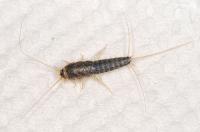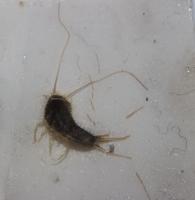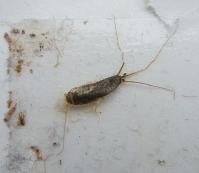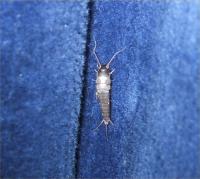Grey silverfish Ctenolepisma longicaudatum
Adult
Size:12-20mm
Shape: Long, tapered, torpedo-like. Often contracts on traps.
Colour: Grey, can darken on traps
Antennae: Extremely long and thin
Distinguishing features: Very similar to common silverfish, Lepisma, body is segmented, has three long bristles at the back end. However, grey silverfish are bigger with longer antennae and cerci (3 bristles at the back end). A further difference is that grey silverfish have a row of bristles around the head and down each side of the body.
Silverfish have nymphs (miniature version of the adult) and not larvae. They are much paler and grow from 1-15mm.
Adults and nymphs are pests of: books, paper, archives and occasionally textiles.
Damage: Both adults and nymphs scrape the surface resulting in thinning and ragged holes.
Often found in: This is a new species to the UK (2016) but is becoming increasingly common in northern Europe. It is believed to cause damage to paper at humidities which are lower than those needed by common silverfish, Lepisma.
If people suspect that they have found this species, they should contact an entomologist to have the identification verified.
Note: the name changed from longicaudata to longicaudatum in 2018, ICZN article 30, opinion 24
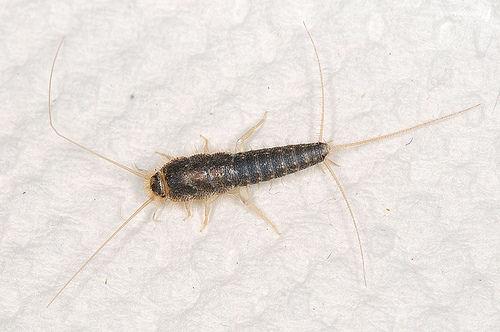

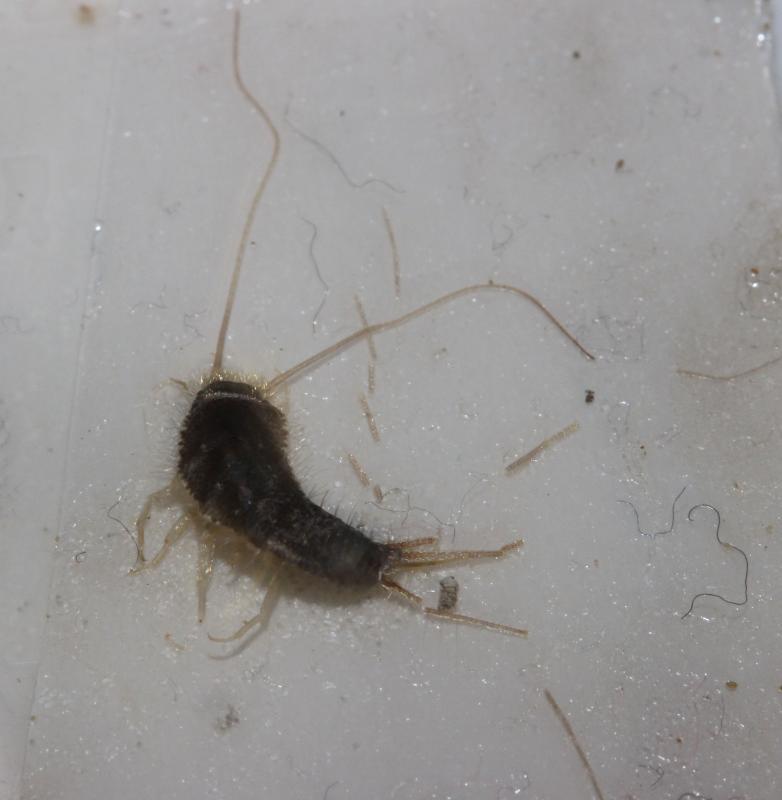
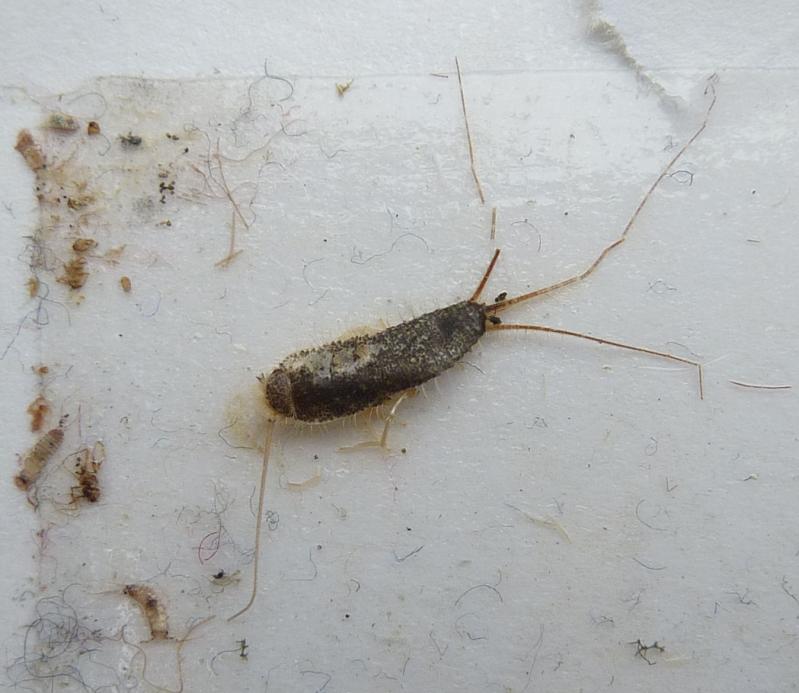
Grey silverfish Ctenolepisma longicaudatum
